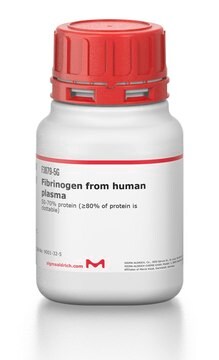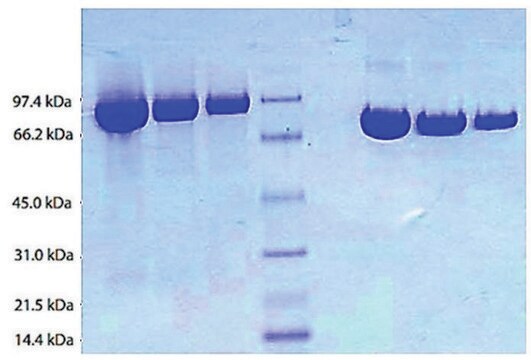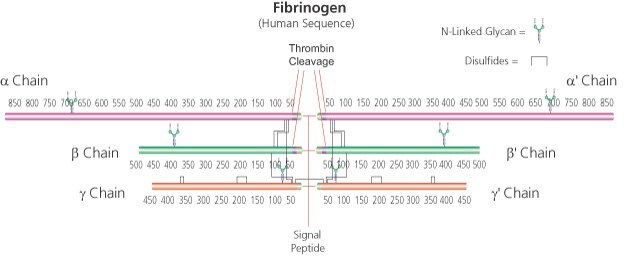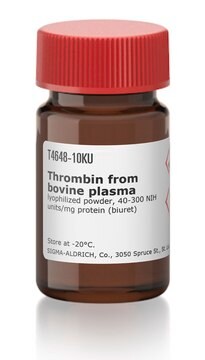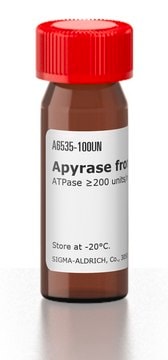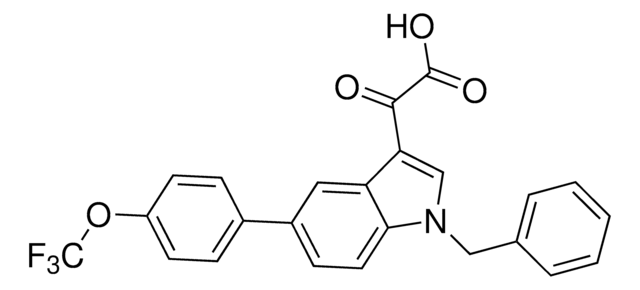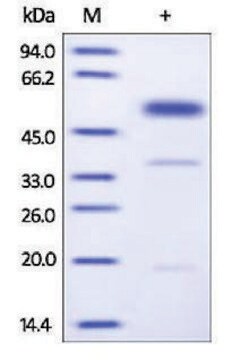A8111
Plasminogen activator inhibitor 1 (PAI-1)
≥200,000 units/mg protein, lyophilized powder, ≥90% (SDS-PAGE)
Sinônimo(s):
PAIE, PLANH1, Plasminogen activator inhibitor, β-migrating endothelial cell-derived type, Serpin E1 PAI-1, Serpine 1
About This Item
Produtos recomendados
Nome do produto
Plasminogen activator inhibitor 1 (PAI-1) human, recombinant, expressed in E. coli, ≥90% (SDS-PAGE)
recombinante
expressed in E. coli
Nível de qualidade
Ensaio
≥90% (SDS-PAGE)
Formulário
lyophilized powder
atividade específica
≥200,000 units/mg protein
peso molecular
~43 kDa
solubilidade
water: 0.1 mL, clear, colorless
nº de adesão UniProt
Condições de expedição
dry ice
temperatura de armazenamento
−20°C
Informações sobre genes
human ... SERPINE1(5054)
Procurando produtos similares? Visita Guia de comparação de produtos
Descrição geral
Aplicação
- as an inhibitor of pro-brain-derived neurotrophic factor (proBDNF) in radioimmunoprecipitation assay (RIPA) in peripheral blood and lymphocytes
- to block plasmin activation in mice infected with C. albicans hyphae
- to test its effect on neurite growth in neurons
Ações bioquímicas/fisiológicas
Definição da unidade
forma física
Reconstituição
Nota de análise
Código de classe de armazenamento
10 - Combustible liquids
Classe de risco de água (WGK)
WGK 1
Ponto de fulgor (°F)
Not applicable
Ponto de fulgor (°C)
Not applicable
Escolha uma das versões mais recentes:
Já possui este produto?
Encontre a documentação dos produtos que você adquiriu recentemente na biblioteca de documentos.
Os clientes também visualizaram
Artigos
Lipid Induced Insulin Resistance
Nossa equipe de cientistas tem experiência em todas as áreas de pesquisa, incluindo Life Sciences, ciência de materiais, síntese química, cromatografia, química analítica e muitas outras.
Entre em contato com a assistência técnica


